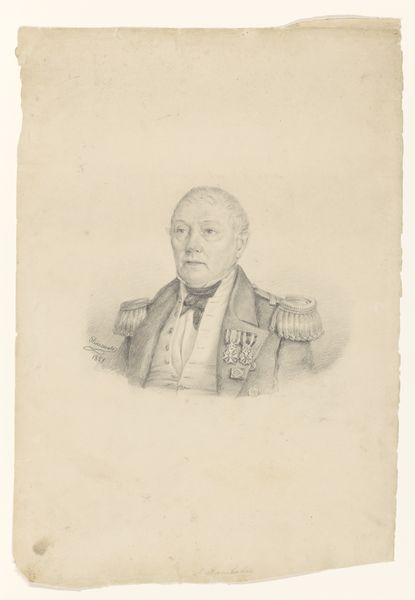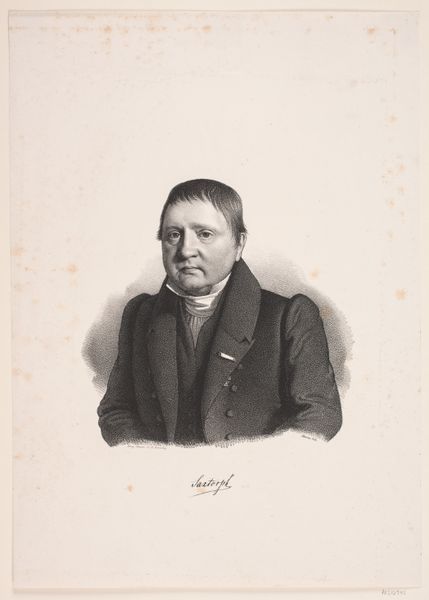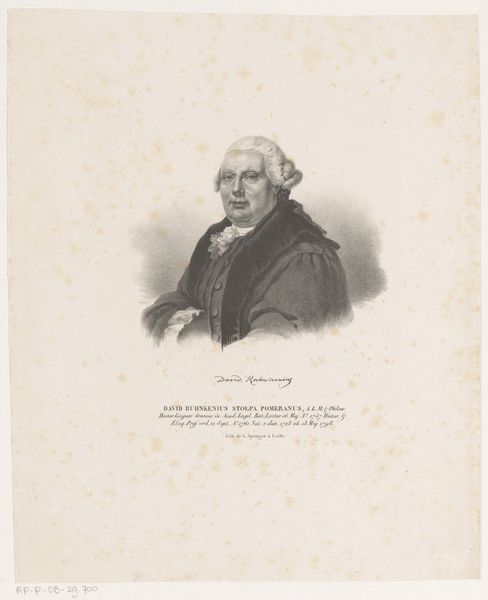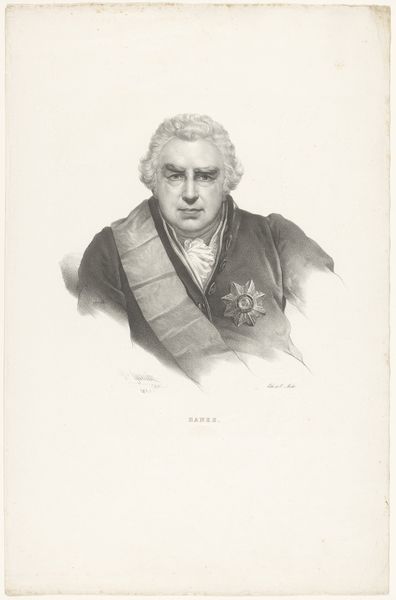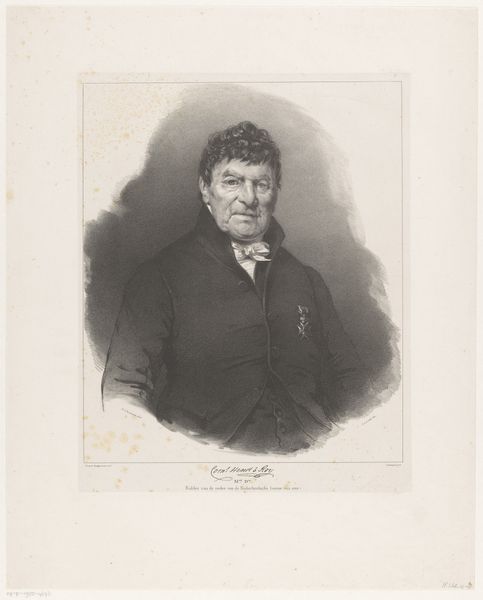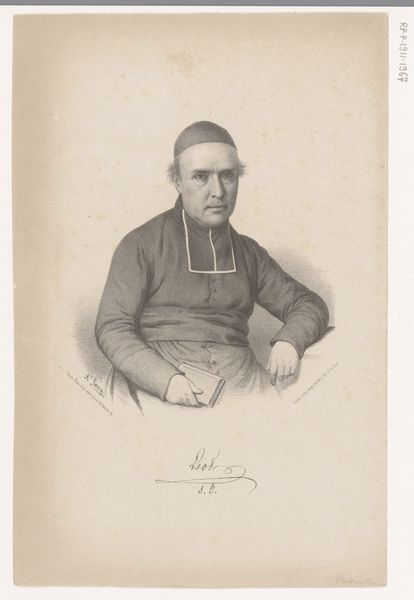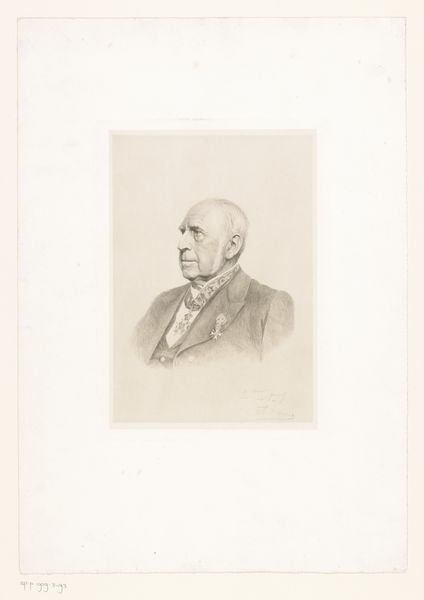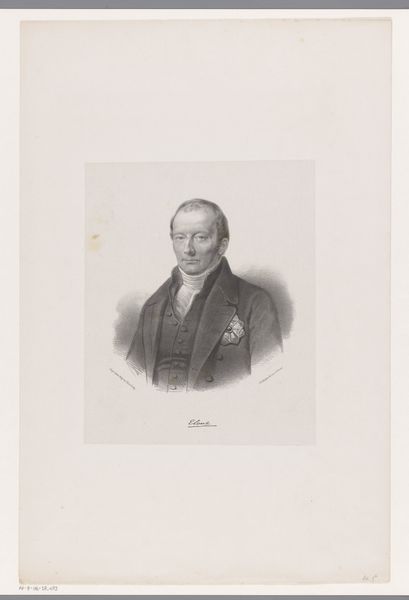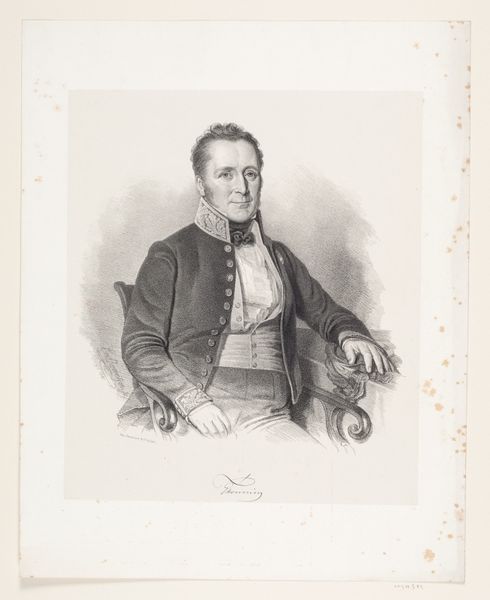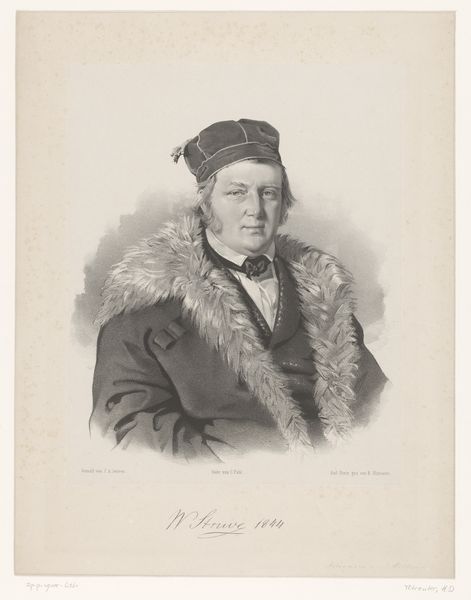
drawing, lithograph, print, pencil
#
portrait
#
pencil drawn
#
drawing
#
lithograph
# print
#
pencil drawing
#
pencil
#
portrait drawing
#
history-painting
Dimensions: 467 mm (height) x 355 mm (width) (bladmaal)
Editor: This is a lithograph and pencil drawing of Landgreve Carl af Hessen, made sometime between 1834 and 1869 by Johan Friedrich Fritz. It strikes me as a very formal, almost stately depiction. How do you interpret this work? Curator: It’s fascinating to consider this portrait within the context of 19th-century European power structures. What does it mean to portray a member of the aristocracy using a relatively accessible medium like lithography? How does this choice complicate or reinforce the Landgreve’s position within society? It almost hints at a democratizing influence on portraiture at the time. Editor: So, by using lithography, the artist perhaps intended for this image, and therefore the Landgreve himself, to be more widely accessible? Curator: Exactly. It provokes questions about the circulation of power and image, particularly given the rise of nationalist sentiment during that era. Were these portraits designed to foster a sense of connection, or were they simply maintaining the elite's visual presence? We might also consider how the visual language – his attire, his medals, his somewhat stern expression – construct and reinforce a particular narrative about leadership and authority. What values does it signal? Editor: That’s really interesting! I hadn't considered the broader social and political implications. The choice of medium speaks volumes. Curator: It does, doesn't it? Considering portraits like this alongside writings and social movements of the period reveals some fascinating power dynamics at play. I wonder, does this add or change your perspective on the portrait at all? Editor: Definitely. It goes beyond just a representation of a man. It is now an active participant in a historical conversation! Curator: Precisely. It serves as a crucial material document offering a snapshot into society's values and structures.
Comments
No comments
Be the first to comment and join the conversation on the ultimate creative platform.

